
Did you know that content marketing is a marketing strategy that reduces expenses and increases loyal customers while generating huge revenue at the same time?
While content marketing is nothing new, more and more businesses finally pay attention to it. In 2020, 70% of marketers are actively investing in content marketing, and so should you!
In this post, you’ll learn what content marketing is, why it is important for your business, and how you can create awesome content.
What Is Content Marketing?
Content marketing is a marketing strategy that is focused on creating high-quality content that is related to a company’s products and services to attract potential customers. The key factor is that the content offers value to customers. This can be done by providing valuable information, attending to customer needs, offering advice, and answering their questions.
There are several types of content marketing that you can use. You need to consider your products/services as well as your target audience when deciding on what types of content you want to create. Here it is important that the type of content fits well with your products and services, and that it is attractive to your target customers.
Some of the most common types of content are:
- Blogs
- Videos
- Infographics
- Podcasts
- Ebooks
- Whitepapers
- Visual content
- Online courses/webinars
- Checklists
And a lot more!
What Are The Benefits Of Content Marketing?
Content marketing has many great benefits for your business:
- More website traffic
- More social media traction
- Sustainable traffic
- Trustable brand image
- Distinguishes your company from your competition
- More customers
- Improves customer retention
- Improves SEO
- Saves money
And more! We’ll explain more in detail below.
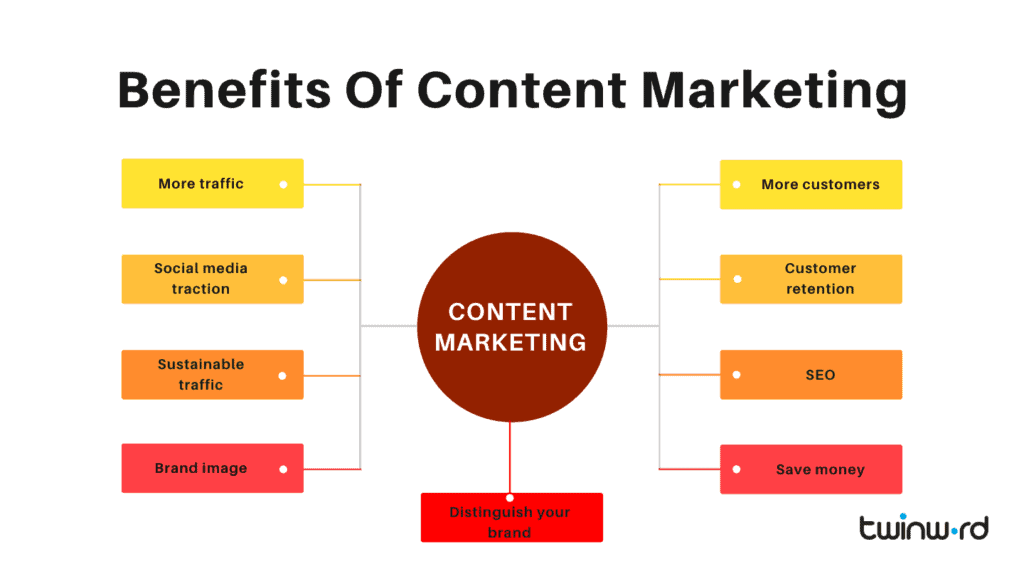
1. Generate More Website Traffic
With high-quality content, you can generate huge amounts of website traffic. The idea behind content marketing is that you’re creating content that consumers are interested in. Therefore, the more high-quality content you generate, the more website traffic you can expect. To increase your traffic potential to the maximum, make sure to optimize all of your content for SEO and remember to update it regularly.
2. Gain Sustainable Traffic
While you can gain traffic through other marketing strategies as well, content marketing offers more sustainable traffic especially if you focus on generating evergreen content. Evergreen content is content that doesn’t grow old but stays relevant over longer periods.
Next to that, if you continuously create new content, your traffic will continuously grow as well. Of course, generating new high-quality content isn’t an easy task, but there are several tips and tricks that you can use to reach your content marketing goals without having to create completely new content every time.
3. More Social Media Traction
The secret to more social media followers and traction is regular activity and, of course, great content! With content marketing, you can highly increase your social media traction by sharing each of your fresh content through your social media accounts.
Another bonus: after sharing your content on your social media channels, you can directly interact with your followers and check out their reactions to your content.
4. Build A Trustable Brand Image
By producing high-quality and helpful content, customers will develop a positive and trustable image of your brand and will come to your website to seek help. This means that they’re also more inclined to trust your products and services, which can lead to higher sales.
5. Distinguish Yourself From The Competition
Nowadays, the full buying experience and after-sale service become more and more important to customers. Through your content, you can distinguish yourself from your competitors as you offer helpful information about your products and services.
6. Get More Customers
This point seems obvious by now, but through content marketing, you can reach and gain more customers than through traditional outbound marketing methods. According to the Content Marketing Institute, you can generate 3 times more leads with content marketing than with outbound marketing!
This is because you create valuable content that customers look for and appreciate. By providing helpful information about your products and services, there’s a higher chance that customers in their decision-making process will consume your content and then convert to a paying customer.
7. Keep Your Customers Longer
Ideally, your content creation focuses on each phase of the marketing funnel, starting from the awareness stage, over to the conversion stage, and up to the loyalty and advocacy stages which happen after a customer has purchased (Conversion stage).
By providing useful information in your content to customers in all stages of the customers’ journey, you’ll be able to retain your customers longer. Not only that, but you can gain loyal customers that will repurchase your products and services and will recommend them to others.
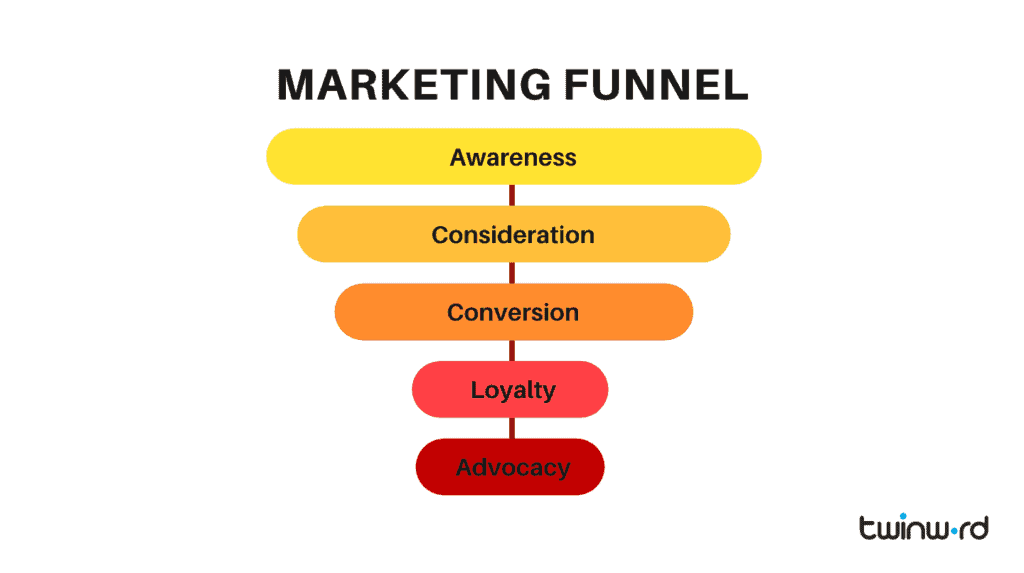
8. Improve Your SEO
Content marketing is perfect for SEO (Search Engine Optimization)! Google wants to show the most valuable and relevant content to users, and content marketing focuses on creating exactly that kind of content. So, the more relevant content you have, the better for your SEO and your ranking.
When generating your content, make sure to include your SEO target keywords. Other than that, you can create content for each aspect of your products or services and optimize for each specific keyword.
Overall, content marketing is very effective to improve your SEO and thus improves your website ranking on search engines like Google.
9. Save Money
Last, but certainly not least, you can save lots of money with content marketing! Content marketing is around 62% cheaper than outbound marketing strategies!
Of course, it’s not easy to create high-quality content regularly, but it’s a great marketing method for any company due to its low costs and effectiveness.
How To Create Good Content?
Creating high-quality and valuable content, sounds great, but how can you create such content?
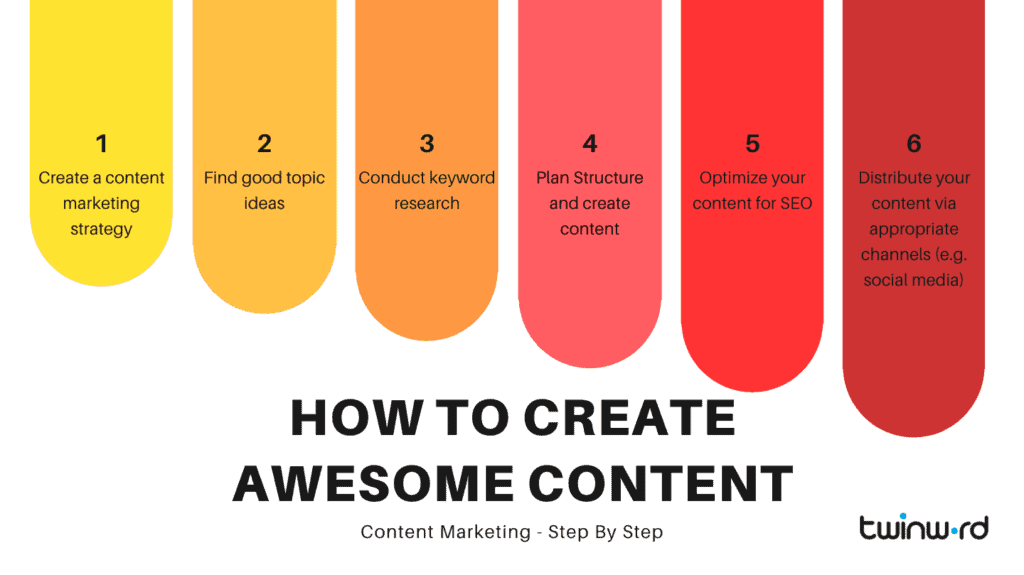
1. Create A Content Marketing Strategy
Before you start creating content, you must’ve developed your content strategy! The main points of that strategy are:
- Who is my target audience?
- How can my content deliver value to my target audience?
- What content format should I focus on?
- What differentiates my content from my competition?
- How will I distribute my content? (e.g. social media, email, etc.)
After you can answer all of those questions, you should be ready to go! But if you want to know more about content strategy and content planning, check out this post about content planning.
2. You Need Good Topic Ideas
Coming up with interesting topic ideas is one of the most difficult steps in content creation. Be it for blogging, video creation, or any other content. You first need a good topic idea that your audience will be interested in.
There are several ways to find inspiration for topics. You can check out what kind of content your competition created, or you can brainstorm what kind of content you’d be interested in as a consumer of your products and services.
Another easy way to find good topics is to use a keyword tool or brainstorming tool. Our keyword tool Twinword Ideas has several features with which you can discover good topic ideas.
We recommend using the Popular Topics filter, which automatically generates popular topics out of the keyword suggestions. With this filter, you can see at one glance what kind of topics are popular on the web.
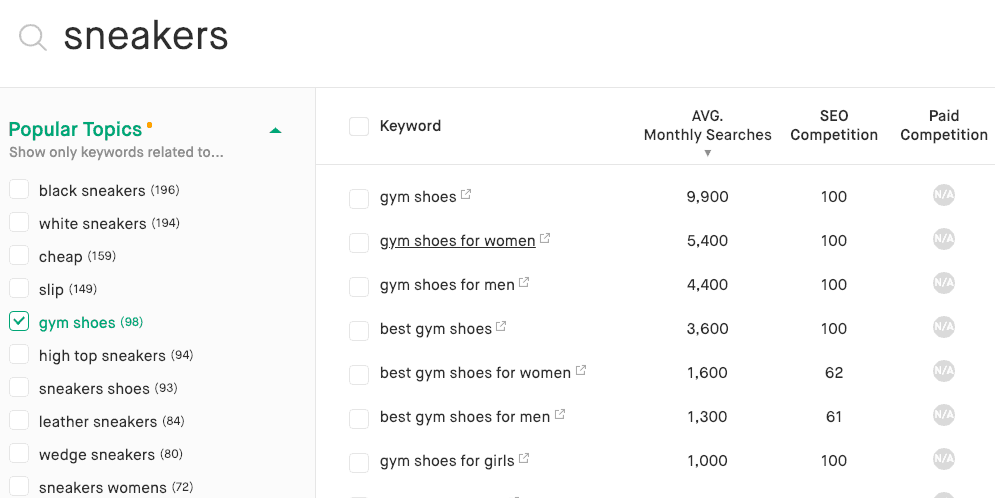
Another great filter to use is the User Intent filter.
“User intent or query intent is what the user wanted when he/she typed their search terms into a search engine”.
Similar search terms can have different intents, such as finding more information (Know), wanting to buy something (Buy), or finding a place that’s in a near location (Local).
Twinword Ideas’ User Intent Filter covers those three different intents: Know, Buy, Local. Choose the intent you’d like to focus on for your content and find the best keywords for that user intent.
So, if you’re a local business, you should check out local intent keywords. If you want to create informational content, then use the ‘Know’ user intent filter, or if you want to create transactional content that is directed towards consumers that are ready to buy, then focus on the ‘Buy’ user intent filter.
Learn more about user intents.
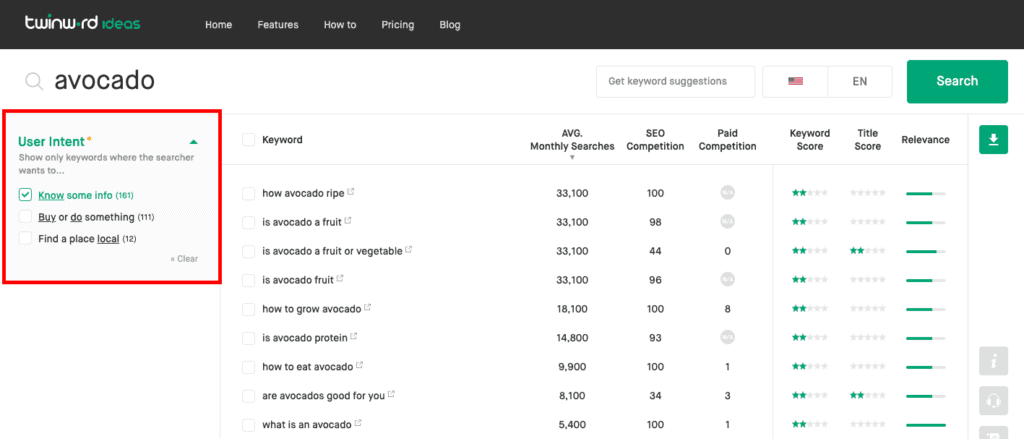
3. Do Keyword Research For Your Content
After you found a great topic, it’s a good practice to conduct keyword research for that topic. Many people conduct keyword research after writing their content and then simply implement those keywords into the content where it makes sense.
However, to make things more natural it’s better to get your keyword list ready before you start writing. This also helps to make sure you’re discussing the topic from all angles, as keyword research will show you what aspects of the topic are important to people.
When it comes to the selection of the right keywords, you need to consider relevance and search volume (the average amount of how often search for this keyword).
Learn how to do keyword research with Twinword Ideas.
4. Plan Content Structure And Create Content
The most difficult step is creating the content itself. After doing your keyword research you should already know what aspects of the topic you want to cover, which is great! Now you only need to plan out your content structure.
Generally, it’s a good idea to establish the structure of the content first before you get into the content creation. This is to ensure that your content gets your message across and is easy to understand for your readers. Once you’ve got the structure, headings, and subheadings down, the rest should be no problem anymore.
Other than that, to ensure your readers click on your content and also continue reading it, you’ll have to nail the headline, introduce your content well within the first paragraph, and then engage your readers within the main content.
Learn more about storytelling in marketing and how you can improve it with SEO.

5. Optimize Your Content For SEO
While you already considered and implemented your target keywords into your content, there’s a lot more to do to optimize it for SEO. Of course, what you can do to optimize your content for SEO depends on the content type.
For website and blog content, make sure to:
- Optimize your title and meta description, and headings,
- Write longer contents,
- Include internal and external links,
- Optimize your images and image alt texts,
- Optimize your URL,
- Avoid flash,
- Check your site speed,
- Create a sitemap,
- Create a robots.txt file
Find out more detailed information on how to optimize your blog posts and website for SEO in this basic SEO guide.
6. Distribute Your Content
After you created and optimized your content, there’s one last important step left, the distribution of your content!
Even though you plan to receive traffic through a high ranking on search engines, if you don’t distribute your new fresh content through other channels such as social media or email, you’ll miss out on essential traffic.
So, make sure to distribute your content via the appropriate channels depending on your target market. Meaning, if your target audience is mostly on Facebook, then focus on Facebook, but if you target more of a professional audience, then maybe LinkedIn is the right channel for you.
While social media doesn’t have a direct impact on your SEO and search engine ranking, it does have an indirect effect due to its traffic generation and engagement. Thus, don’t forget to share your fresh content on there!
What Are Your Content Marketing Goals?
Now that you know all the basics about content marketing, will you start giving it a try? The great thing about this marketing method is that it can be applied to almost any product or service.
While it isn’t always easy, it’s worth the effort! Set your goals now and start creating valuable content!
Check out these other posts on Content Marketing:
- How to reach your content marketing goals
- Get the right traffic to your website with thorough content planning
- The importance of user intent
- Best keyword tools for content marketing

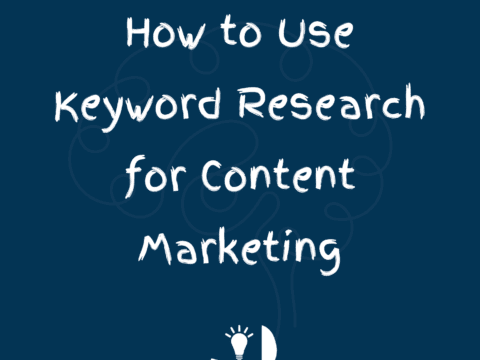
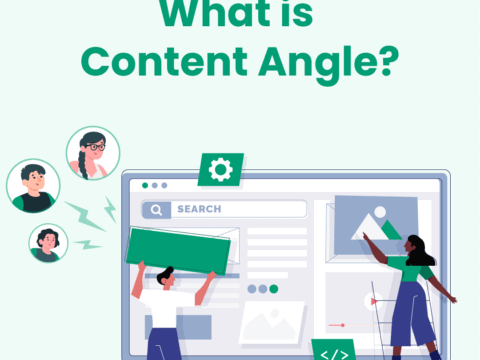
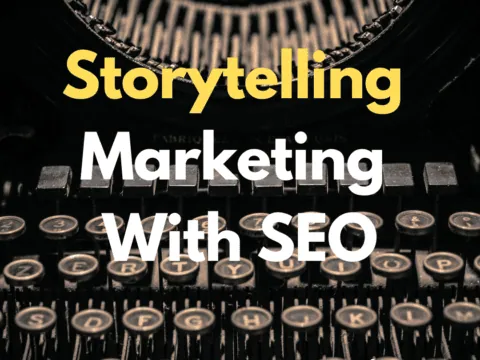
3 Comments
thanks for sharing this blog on Content Marketing Strategies
This is truly amazing sir. You’re the best. I’m certainly going to give this a shot. I’ll rebuild my substance and make it simple to peruse as well. I’ll update you as often as possible on the outcomes.
Great article. Many marketing questions were obscure. Here, clear definitions of tasks and goals and ways of their implementation are given. It’s great that all of these tips can be applied to almost any product or service.